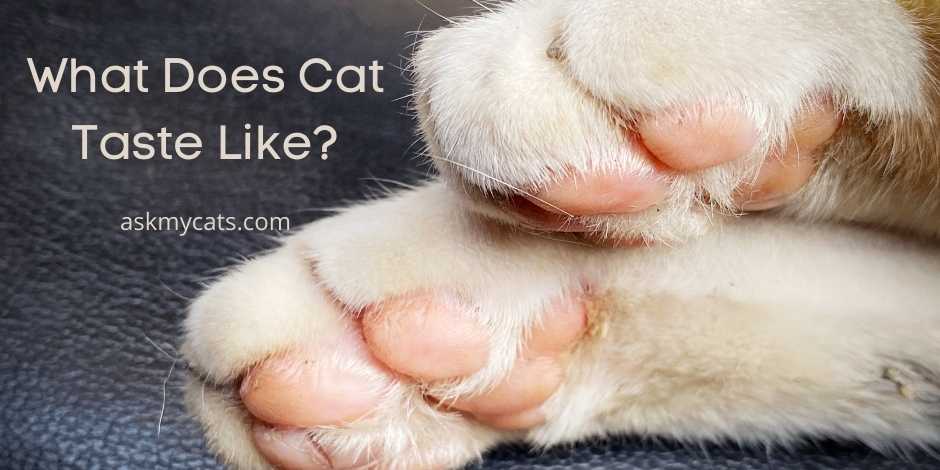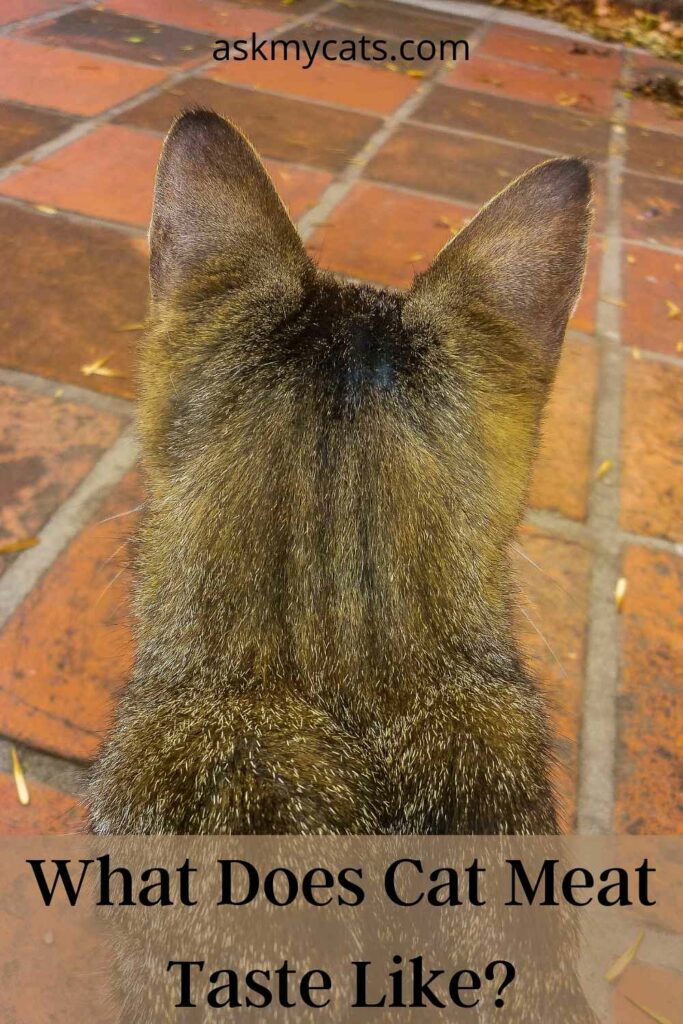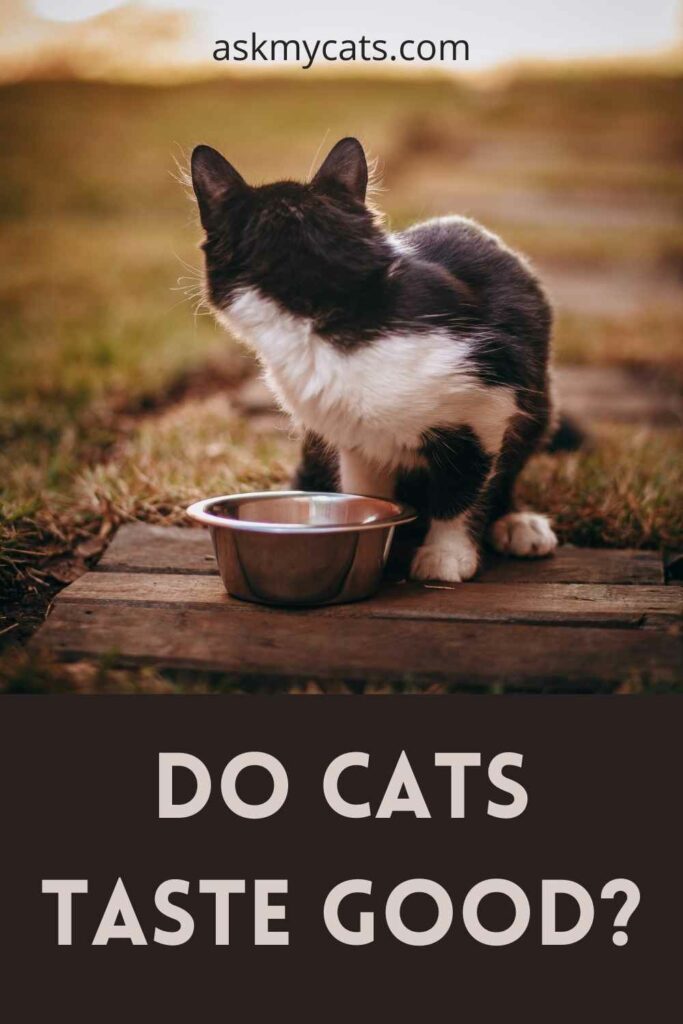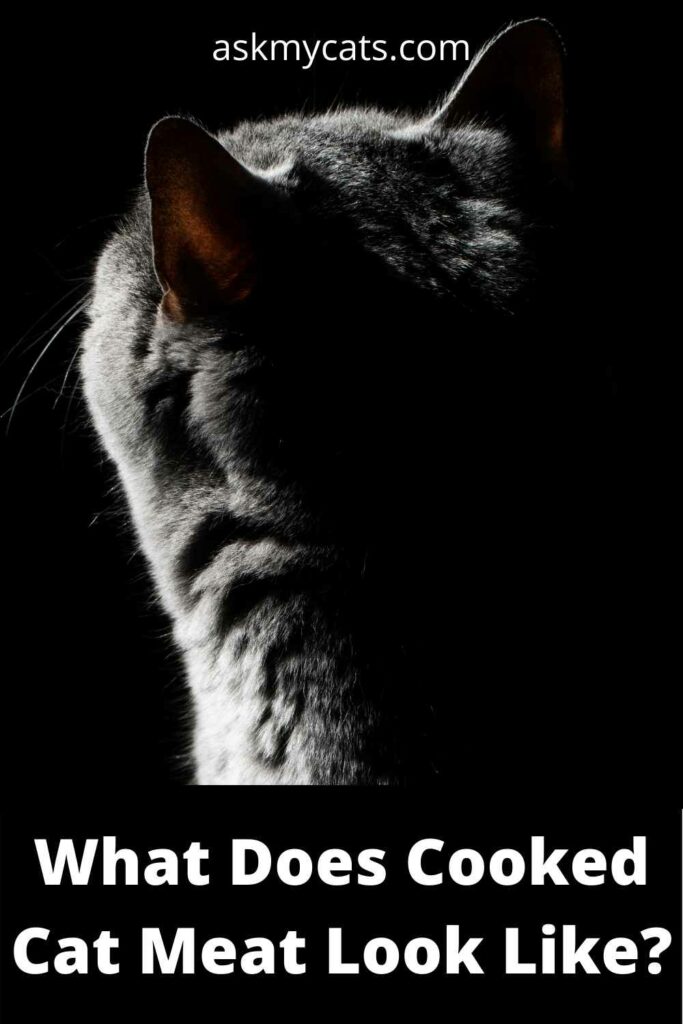Cat meat, like dog meat, has been consumed all across the world. Cat is still popular in several areas of Peru, Switzerland, and, of course, China!
In Hanoi, there are still hundreds of restaurants that serve cat, and it is unusual to see cats wandering the streets — most pet owners keep their cats home or tied up to avoid cat thieves.
Cat meat is better than any other animal meat because the flesh is sweeter and more delicate.
For more details, read the whole article to get a clear picture of how does a cat taste!


Give Your Cat the Perfect Day
Get the Free Ebook!
What Does Cat Meat Taste Like?
The meat tastes not at all like chicken; it had a bright red hue, not the deep black colour of dog meat. It had a faint pork flavour to it, but it was full of strange small translucent fish-like bones with a slight sour aftertaste.

It was much simpler to consume the boneless chunks than the little bony ones. The cat intestines were unexpectedly delicate and delicious, making them some of the nicest guys I’ve ever had.
Overall, the cat hot pot was good, but it wasn’t my best meat I’ve ever had.
Cat meat is meat from domestic cats that has been processed for human consumption. Some countries eat cat meat on a daily basis, whereas others have only eaten cat meat out of desperation during times of war or famine.
In 2016, cat meat was offered in areas of Chennai, with the Narikuravar group being the primary consumers. In the same year, reports surfaced online that certain Narikuravars in Bengaluru were shooting wild and stray cats for their meat.
In many regions of the world, cat meat or cat flesh, which is meat produced from domestic cats for human consumption, is seen differently as a food source.
Some countries, notably the United States, have resorted to eating cat meat out of desperation during times of war or famine, while others think that eating cat meat would bring good luck or health and have long-standing ways of preparation.
Consumption of cat meat is considered forbidden in a number of cultures and faiths, for sanitary or humanitarian reasons.
Supporters of cat meat respond by claiming that the distinction between livestock and pets is arbitrary, and that there is no difference between consuming the meat of various species.
Eating cat meat is frowned upon in most societies, maybe even more so than eating dog meat, and it is forbidden by many faiths. Consumption of cat meat is prohibited by Jewish and Islamic dietary rules due to cats’ carnivorous nature.
In the regions of Guangdong and Guangxi in south-eastern China, some people, particularly the elderly, believe cat meat to be an excellent winter warming meal. In the north of the country, though, eating cats is frowned upon. In China, an estimated 4 million cats are eaten each year, and the number is increasing.
Cat, on the other hand, is only found outside of town and on the fringes of the city, thus foreign visitors are unlikely to see it served in downtown eateries.
The stomach and intestines of the cat, as well as flesh from the thighs, are eaten as meatballs served with soup, while the head and the remainder of the animal are discarded. Cat meat is a key component in the traditional Guangdong meal “dragon (snake), tiger (cat), chicken,” which is supposed to strengthen the body.
Do Cats Taste Good?
Cat meat is stringy, greasy and difficult to digest. The oily and chewy nature of the cat meat makes it hard enough for a consumer to eat.

Cats are obligate carnivores, which mean they must consume animal products in order to thrive. Their taste receptors may have developed to meet their nutritional requirements (or the other way around).
Cats don’t require carbs in their diets; therefore they don’t need to recognize sweet flavours. Despite having tongues that are comparable to those of other mammals, cats have a few distinct distinctions.
There is occasionally a debate amongst cat and dog lovers over which pet they would choose to have as a family member. Cat enthusiasts would tell you that cats are preferable to dogs since they are independent, not clinging, and loving when required.
While dog owners may claim that their pets are more loving, they may also protect your house. Although we believe that all pets are equal, we have included a comparison of the senses of the two animals for those who disagree.
While cats may have won the first round, this is not the case when it comes to the sense of taste. According to studies, the average cat has just 473 taste buds. To put this into context, the average human has around 9000 taste buds. As a result of their acute lack of taste, cats rely heavily on scent to identify what they consume.
No matter how tasty a dish is, if it doesn’t smell good, your cat will refuse to eat it since they can’t tell the difference in flavours. While not as good as humans, the typical dog has 1709 taste buds, which is substantially more than cats.
Dogs can sense sweet, sour, salty, bitter, and savoury flavours, but cats can only detect sour and bitter flavours since the quality of the meat they eat is more significant to them. Cats can sense salty and bitter flavours, but not sweet ones.
This is because cats are carnivores who only consume meat, but dogs are omnivores who eat a variety of foods. As a result, they lack the capacity to taste sweet items, which is not required for life.
You now understand why dogs beg for leftovers off your plate while cats do not. Dogs, unlike cats, can taste some of the delectable tastes in the meals we make.
What Does Cooked Cat Meat Look Like?
A cooked cat meat just looks like any other cooked animal meat but the taste is absolutely different from other.

The sense of smell is critical in both drawing cats (and us) to food and assisting in food taste. Because cats’ noses are several times more sensitive than ours, it’s thought that their enhanced sense of smell aids them greatly in tasting diverse aromas.
Cats have a sense of smell that is comparable to ours, but they also have an auxiliary sense. The Jacobson’s organ is a biological feature found on the roof of a cat’s mouth. It is the tube that links the mouth with the nasal route.
Cats, dogs, mice, horses, elephants, goats, cattle, pigs, reptiles, snakes, and certain primates are thought to utilise this organ to “taste-smell” smells around them, such as food and pheromones. The tongue is rubbed against the roof of the mouth, the lip is slightly curved, and odours are inhaled to the tongue.
The animal’s mouth, nose, and Jacobson’s organ then allow it to detect the essence of the flavour and fragrance in a manner that we cannot.
Human taste buds can detect sweet, sour, bitter, salty, and meaty/savoury flavours (umami). Cats have taste buds that are similar to ours, although their sweet taste buds are not as responsive.
Cats are obligate carnivores, meaning they are forced to eat meat. They don’t require sugar or carbs (which convert to sugar); therefore they have no incentive to develop a taste for it or a sweet tooth, if you will. A cat’s hunger is mostly driven by taste receptors that react to meat and the facts contained within.
Many individuals claim to have cats that are drawn to candy, ice cream, pudding, and other sweets. They are certain that their cat like sweets, but it is most likely the fat content of the meal that draws them in. Fat is easily detectable by cats.
Bitter and sour taste receptors are critical because they alert a cat to potentially hazardous or toxic foods or items.
With the creation of such items as bitter apple spray, cats’ dislike to bitter tastes has been properly noticed and refined through the years. This bitter-tasting liquid is used to keep cats from licking and chewing on wounds, furnishings, bandages, and other items, and it’s also a good training tool.
Almost every cat has a preference for food consistency. Large chunks of kibble are more preferable than crumbs in kibble. Food that is soft is typically favoured over food that is firm.
A cat’s predilection for warmer food, about 100 degrees Fahrenheit, which replicates the warmth of newly slain prey, is also significant to them. A cold bowl of food straight from the refrigerator will be rejected by the majority of cats.
The form of food appears to be significant to cats as well. When the forms of kibbles change from day to day or week to week, many cats become considerably more interested.
Frequently Asked Questions
Does cat taste like chicken?
It has a texture comparable to goat or pork. It’s similar to chicken, although it’s a little stringier. The hue is the same as pork, and the fattiness is the same. That’s the extent of the resemblances.
Is Cat a Chinese food?
In China, Vietnam, and even portions of South America, cat meat is on the menu. The Chinese government has indicated that it is prepared to remove the meat off the market.
Can you live off cat food?
Pet food is not meant to be consumed by humans. There’s no way of knowing how many people consume crunchy kibble or mushy canned pet food, but it’s definitely as risky as eating table scraps.
Final Words
Many people eat cats as part of their home-cooked meals. These meals often include cooked or raw meat, bone, vegetables, and supplements like taurine and multivitamins.
Feel free to ask your questions in the comments section below!
References
- https://www.midoricide.com/blogs/midoricide-blog/dogs-vs-cats-a-comparison-of-the-5-senses
- https://www.livescience.com/32515-will-eating-pet-food-kill-me.html
- http://www.cnn.com/2010/WORLD/asiapcf/03/09/china.animals/index.html
- https://www.indiatvnews.com/news/india-mutton-or-cat-meat-story-of-this-chennai-neighbourhood-will-shock-you-427435

So, I am Swiss. We do not eat cats.
To say that it’s popular here is just wrong. What source claimed this?
you can find it here…
https://en.wikipedia.org/wiki/Cat_meat#Switzerland
https://www.bbc.com/news/newsbeat-30205410